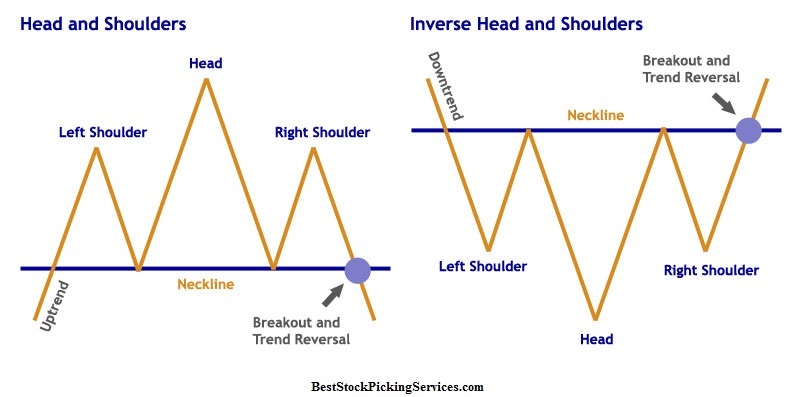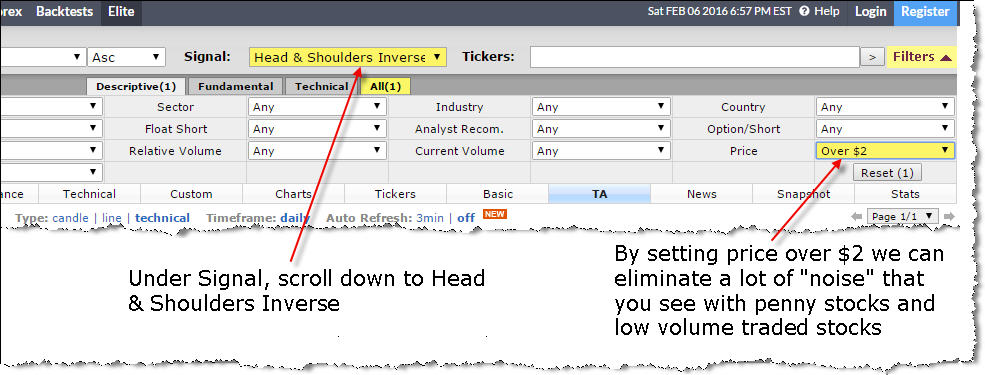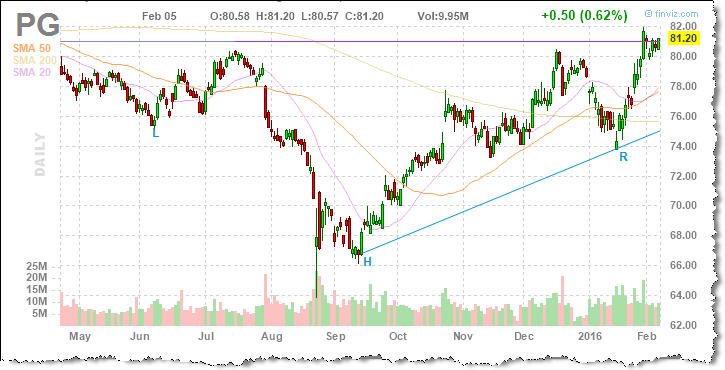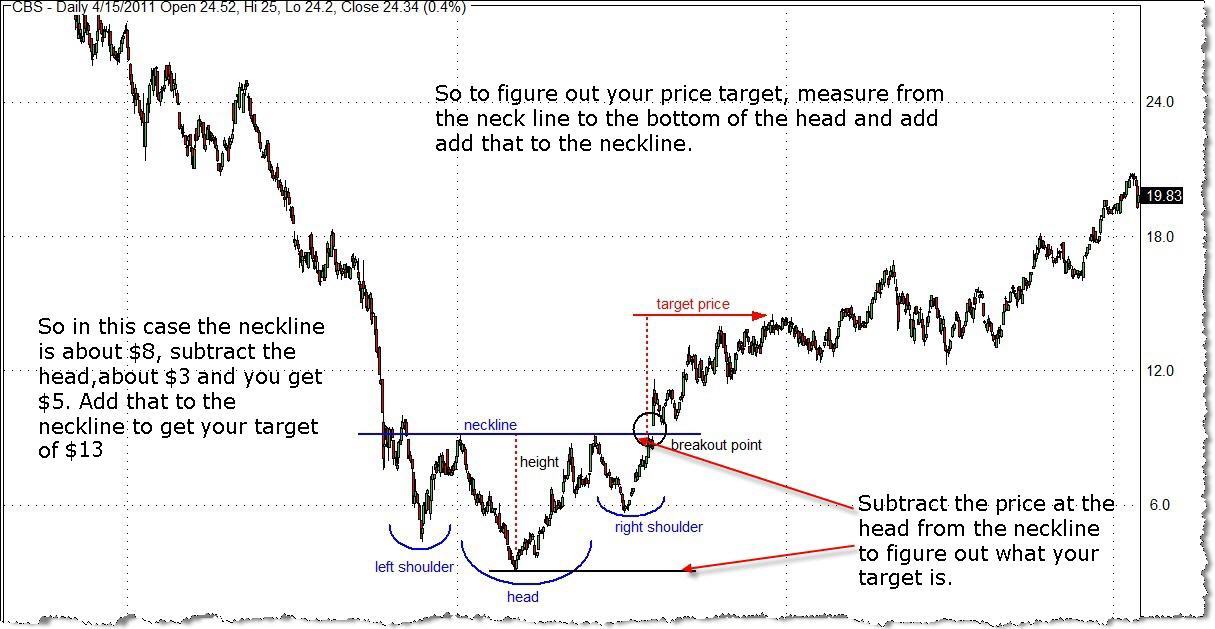When swing trading you need to focus on strategies that have a very high probably of success. I have found that looking for a few reliable chart patterns is the best way to go. I personally look for 4 different chart patterns, with the Head and Shoulders pattern being my favorite.
There are lots of other chart patterns but I find them either hard to find on the charts or the outcomes are not as reliable. In this guide I am going to show you how to look for and use the head and shoulders chart pattern. It is one of the best known and reliable of the chart patterns.
So first off lets define what it is and what the ideal pattern looks like. You also need to know there are two “flavors” of the pattern. The standard head and shoulders which is a bearish pattern and the inverse head and shoulders pattern which is bullish.
So the Head and Shoulders Top is:
- Seen at market tops.
- Usually takes several months to form.
How the pattern forms:
- Left shoulder: Prices rise followed by a left price peak, followed by a decline.
- Head: Prices rise again forming a higher peak than the left shoulder.
- Right shoulder: Another decline occurs, followed by a rise forming the right peak which is lower than the head.
- Keep in mind that the head and shoulders formation is rarely perfect, which means there may be some “noise” between the respective shoulders and head.
So here are the “ideal” head and shoulders chart patterns:

The inverse Head and Shoulders bottom is just the mirror image of the head and shoulders top. Ok, so now that we know what it looks like, how do we find it? Lets head over to finviz.com and they have a FREE screener that we can use:
There are just a few settings that I use to look for the inverse head and shoulders (bottom or bullish formation):
- At the top of the page, click on Screener then Signal and scroll down and click on “Head & Shoulders Inverse”
- Then change the Price to over $2, this will filter out a lot of “junk” stocks and other noise that you will get with penny stocks.
- Click TA (Technical Analysis) to see the results as charts so you can quickly scroll through them looking for the pattern.

So as you scroll down through the results, look for charts that look similar to the below.

So once we have a few candidates, we need to figure out where to get in and what our target is. This is pretty easy:
To calculate your target:
- Figure out the price of the bottom of the head.
- Figure out the price at the neckline.
- Subtract the price at the bottom of the head from the neckline.
- Add the result to the neckline to get the target.
Once you find one, you should place a resting stop just above the neckline to get in as soon as prices break over it. Otherwise there is a good chance you will miss your chance.
So in the example below, the neckline is about $8, the bottom of the head is about $3. Subtract $3 from $8 to get $5, then add $5 to $8 to get $13. If and when the stock gets there you should take your profits.

To look for the head and shoulders top, click on Signal and select: Head & Shoulders and select Price over $20. You want the price high enough so that there is enough room for the stock to fall so there is enough profit in the trade to make it worthwhile.

The biggest problem with the head & shoulders formation is that they take a long time to form and you need to run the screen frequently so that you can find them before they break out.
The alternative is to use a stock picking service like Jason Bond Picks or Microcap Millionaires. They do scans for the head and shoulders pattern along with others and once they find one ready to break out you will be notified so that you can place your order.
You can read my reviews here: Microcap Millionaires Review and Jason Bond Picks Review
If Penny Stocks are your thing, then you should definitely check out Microcap Millionaires.
Read my review of Microcap Millionaires
You can read all my reviews on stock picking services here:
If you are looking to open a brokerage account or looking for a better one, I wrote some reviews of brokers I have used and currently using.
OptionsHouse Review (Currently Using)
Scottrade Review (Used when I first started)
See all of my swing trading strategies here.
If you have any questions feel free to contact me.
-Robert Walsh





